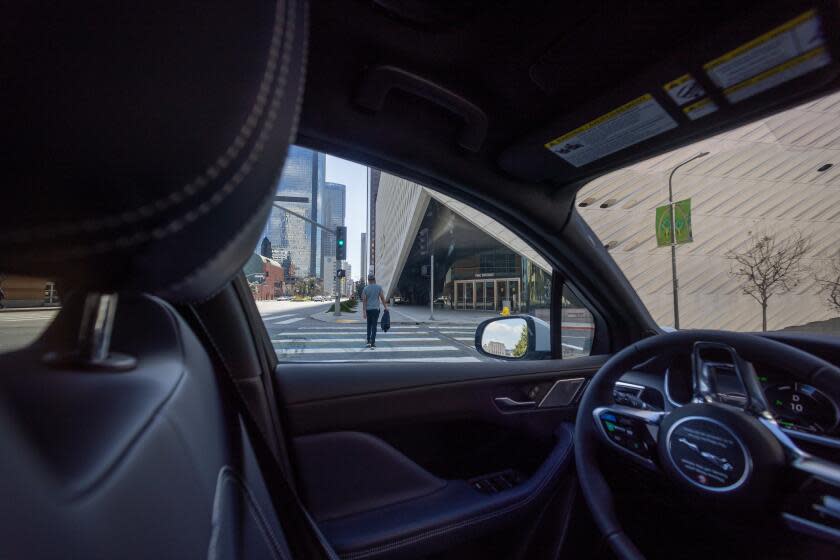EVs and hybrids are twice as likely to hit pedestrians as gas cars, study shows

Young children are trained to stop, look and listen before they cross the street. In the electric car age, parents might want to put extra emphasis on the word "listen."
Pedestrians are twice as likely to be hit by an electric or hybrid car than by a vehicle that runs on gasoline or diesel, according to a study released Tuesday by researchers in London.
While crash statistics aren't yet robust enough to reach scientific conclusions on the reasons, the researchers hypothesize that the relatively quiet operations of an electric vehicle is the key factor. Pedestrians in noisy urban areas were almost three times as likely to be hit by an electric or hybrid car.
Lead researcher Phil J. Edwards at the London School of Hygiene and Tropical Medicine told The Times the study is not intended to be anti-EV. "Electric cars are definitely a thing for the future. They are a wonderful way to reduce air pollution," he said. "But we must mitigate the danger" to pedestrians. EV drivers "need to be extra cautious of pedestrians."
Research on the the effect of electric vehicles on public safety is scarce — not just for cars and trucks, but electric bicycles, scooters and other forms of electric transportation. But as the EV market grows, the subject is attracting more attention.
The last notable study was published in 2009 by the National Highway Traffic Safety Administration, with results similar to Edwards'. The safety problem, the NHTSA study said, was especially prevalent at low speeds.
The growing epidemic of pedestrian distraction was outside the researchers' purview, but Edwards said it's likely a contributing factor: "I'm sure there would be an effect, because people are too busy looking at their iPhones as they step into the road."
Read more: Are Tesla Superchargers really open to other EVs in California? It's complicated
After the NHTSA study, Congress passed a law in 2010 to require that electric cars traveling below 19 mph emit a sound loud enough to warn pedestrians, but it took 13 years for NHTSA, which tends to take its time addressing public safety issues, to put the law into effect. Similar laws in Europe were implemented in 2019.
The British study, published in the Journal of Epidemiology and Community Health, looked at crash statistics across England, Scotland and Wales from 2013 to 2017. Edwards said he intends to conduct another study with data from 2019 onward to test the effect of the pedestrian-alert technology.
He acknowledged that because a hybrid car has both an electric motor and a gasoline engine, some of the hybrid crashes likely occurred with the combustion engine running. But he pointed out that at low speeds, hybrid cars tend to switch from the fossil-fuel engine to the electric drive unit.
The study looked at all pedestrian-involved crashes, whatever the severity. Safety advocates are concerned that the extra weight of an electric car's battery can lead to more severe pedestrian injuries. They also note that vehicle-caused pedestrian deaths are proliferating as heavy SUVs replace sedans and as the hoods on many pickup trucks now stand shoulder high on a six-foot human — and far above the head of a child.
Read more: Can California pull off the epic transition to EVs? Read our coverage here
This story originally appeared in Los Angeles Times.


